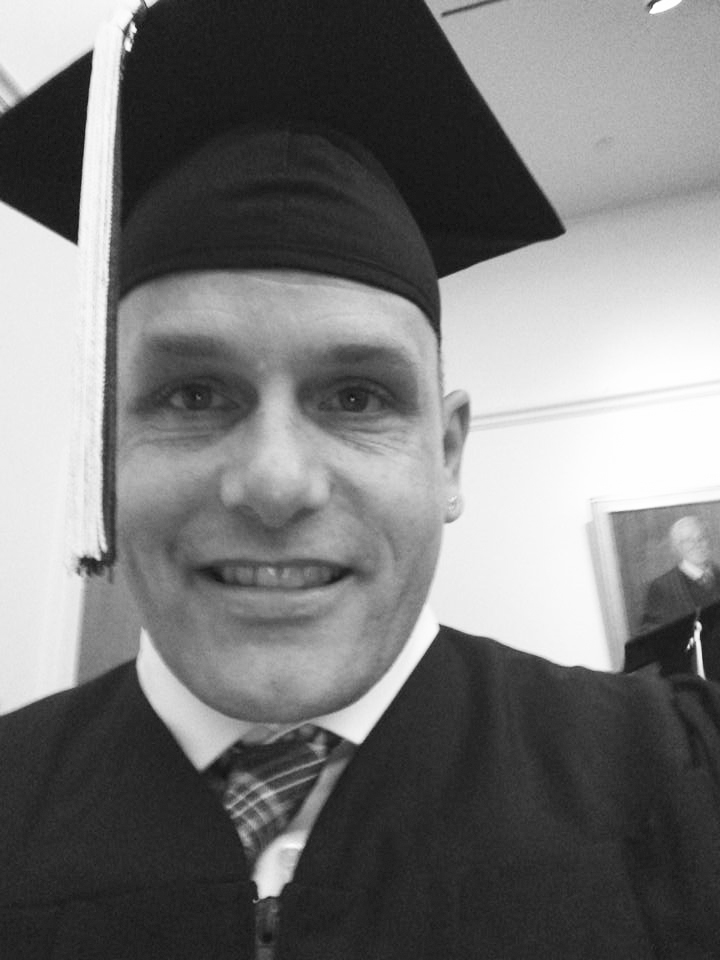David Garlock enrolled in GED courses and eventually earned his master’s in theology through an unaccredited program offered at the prison. Photo courtesy of David Garlock.
David Garlock took a man’s life in 1999 and received a 25-year prison sentence. Currently, Garlock is the program director for New Persons Ministry, a re-entry program in Pennsylvania where he works with sex offenders to rehabilitate their lives after prison. On Wednesday, April 4, Garlock spoke to Hofstra students during his “Returning Citizen” lecture about his life before, during and after his time in the criminal justice system.
He divided his story into eight chapters: dysfunction and abuse, freedom, preparing for the future, giving back, equal justice initiative achieving goals, grace and advocacy.
“Once you’re in prison it’s a revolving door,” he said of the current recidivism rate in the United States. He stressed the importance of better understanding the American criminal justice system and the reform it must undergo in order to make a meaningful, societal impact, pointing to the approximately 2.5 million inmates of the current prison population.
Sarah Mendoza, a senior mass media studies major, noted how Garlock did not refer to himself as a victim throughout his presentation. “He was always putting himself down for this action of murder even though most people would call him a victim/killer,” she explained.
The first part of Garlock’s story, dysfunction and abuse, described his upbringing in an abusive household. When his brother was 13 years old, he was kicked out of the house. Garlock pointed to this as where things began to go wrong. It was shortly after this that a man began to sexually abuse his brother.
While he was incarcerated, Garlock enrolled in GED courses and eventually earned his master’s in theology through an unaccredited program offered at the prison. He explained that in this time of need, he turned to faith.
Justin Joseph, a sophomore journalism major, empathized with Garlock and other previously incarcerated people after listening to his story. “I viewed them mainly as criminals who I did not feel sorry for after they got out of prison with finding a job and so forth,” he said.
Garlock insisted that there are two types of inmates. “[There is] the person who does the time and [the] person who allows the time to do them,” he said. He capitalized on the opportunities afforded to him during his time at the Walker County Jail in Jasper, Alabama.
The Garlock brothers decided to kill their abuser, who was a product of the criminal justice system himself, after eight years of sexual and physical abuse. It took four months for the authorities to find the body, Garlock explained. “During that four months, it was probably the hardest time of my life because here I am living with the fact that I took somebody’s life,” he said. He turned to alcohol and drugs as an escape from the reality that he committed murder.
Garlock’s presentation sparked a larger discussion of rehabilitation in prison. “He took the step to better himself and good thing that there actually was resources for him to go further and obtain his master’s degree,” Mendoza said. “But this is just one story and for people in prison now who are hurting due to the prison industrial complex, more lawmakers need to do more.”







